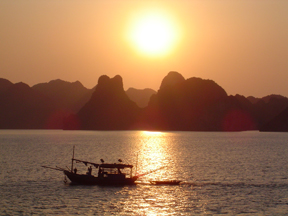NRDC workshop explores links between environmental conservation and clean water for the poor
|

On World Water Day, March 22 2011, people around the world celebrated clean water and explored solutions for the world's biggest environmental health crisis - the lack of safe water and sanitation.
Killing more children each year than AIDS, Malaria and TB combined, the water and sanitation crisis remains a major challenge. Fortunately momentum is building and people are increasingly recognizing the tremendous value of water. Check out these people marking the day with a combination of humor and serious action in London, Washington, Hollywood, and South Africa. As part of a broad coalition based in Washington D.C. NRDC participated in a series of events throughout the week bringing together a variety of conversations about water and sanitation.
WASH and Healthy Ecosystems Workshop
Joining together with Catholic Relief Services, Conservation International, The Nature Conservancy, The World Wildlife Fund and more, NRDC sat down with the experts to explore how integrated planning and programming can provide more access to clean water while improving the health of freshwater ecosystems.
We conducted our workshop concurrent with other workshops on health and water, and education and water. Our many groups are working to improve water access because of its important linkages to human health, food security, environmental sustainability, education and security. As Hillary Clinton put it at her speech on World Water Day:
the water crisis is a health crisis, it's a farming crisis, it's an economic crisis, it's a climate crisis, and increasingly, it is a political crisis. And therefore, we must have an equally comprehensive response.
Participants explored an intriguing model in Ranon'ala Project in Madagascar where Conservation International and Catholic Relief Services are working on a USAID funded project to bring together improved access to clean water and sanitation with integrated water resources management (IWRM) to protect resources for the long-term. We also learned about the WaterFunds program in Colombia and Ecuador where The Nature Conservancy is protecting watersheds to provide cost-effective improvements in water security.
Integration activities like these are serving as a model. Experts from USAID attending the event, chief among them the newly appointed Global Water Coordinator Chris Holmes noted that despite challenges - many of USAIDs departments strive to achieve integration. We also learned that the American Red Cross has made integration a requirement of all water and sanitation service delivery programs. In Haiti after the earthquake and in Sri Lanka after the Tsunami - the Red Cross explored new ways to make sure the water remains clean and drinkable long after the disaster is over and the project is complete.
Now that World Water Day is complete, we will be working to compile more stories like this and build a body of knowledge about integration between these two fields. If you would like to share your project or ideas with us please send me an email hallen@nrdc.org.
We hope that in the coming months and years the advantages of integrating water programs will prove that critical cost savings can be achieved and lives saved. Happy World Water Day!
Photo credit: PATH














